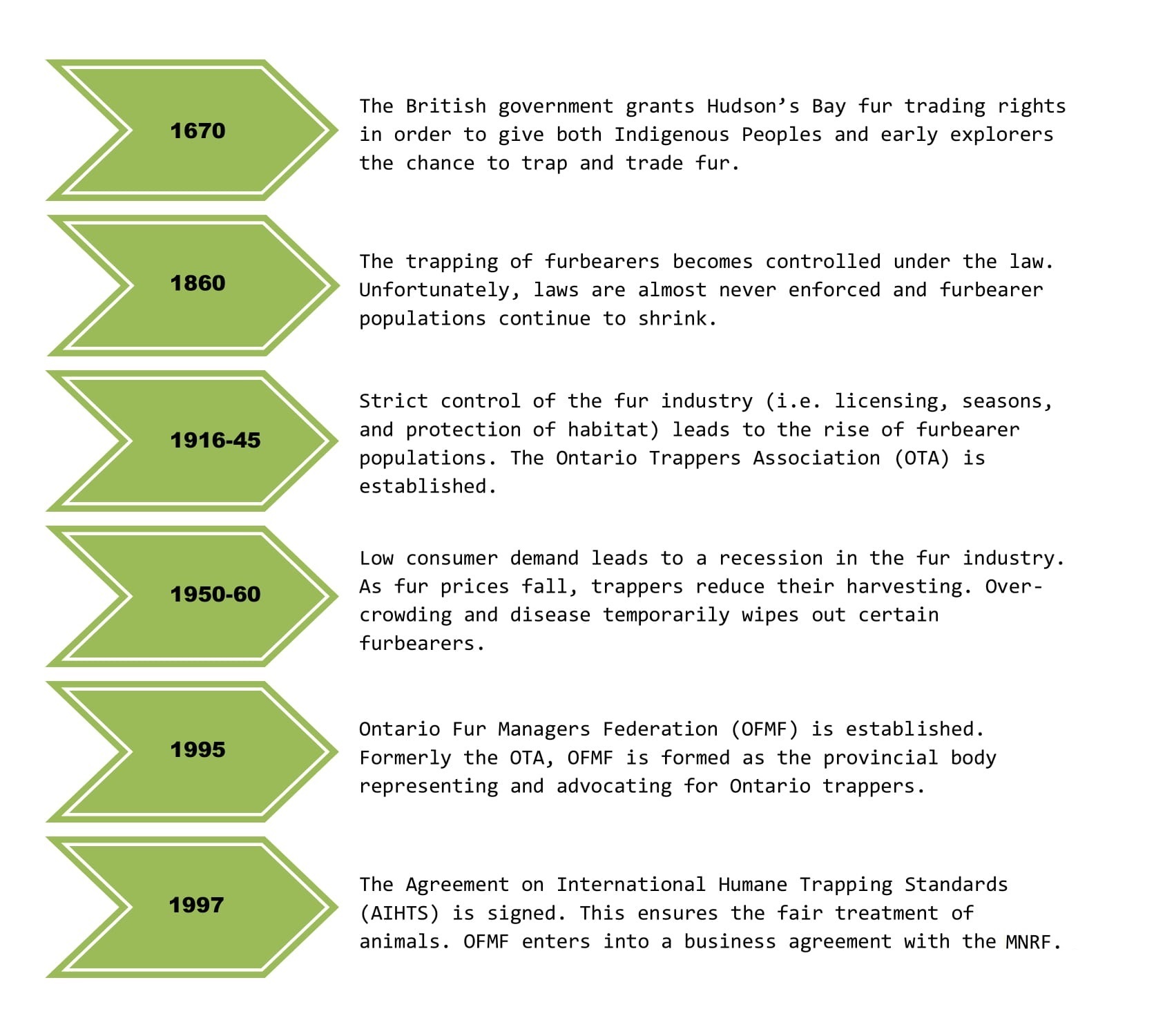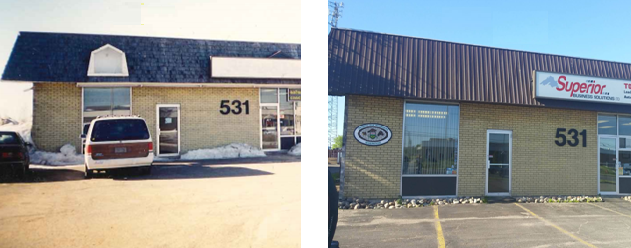Past…
The fur industry is the oldest land-based industry in North America with a history of more than 400 years. Below is a timeline outlining the major events in the trapping industry.
Present…
Managing Ontario’s Furbearers for Today and for Tomorrow
Furbearers are an important part of Ontario’s abundant wildlife. Twenty-two species of furbearers occur in our province, occupying forests and fields from the southernmost tip to the farthest northern regions. These furbearers also represent an important natural resource, which is harvested on a sustainable basis by over eleven thousand licensed trappers. This harvest in its raw form was valued at over $1,750,000 in the 2015/16 season. The economic spinoff of secondary processing and manufacturing, including fur garments and crafts, is immense. The harvest is destined for export outside the province and the country contributing favourable to Ontario’s, and Canada’s, balance of trade. The net economic effect of raw wild fur sales, secondary processing and the injection of new dollars into the Ontario economy is in excess of $100,000,000 annually. To ensure the continuation of a traditional harvest and a way of life for Ontario’s trappers, as well as the economic benefits to all of Ontario’s citizens, careful management of the wild fur resource is required. The OFMF works in close co-operation with the implementation of the Wild Fur Program. All prospective trappers must successfully complete the Fur Harvest, Fur Management and Conservation Course as a mandatory prerequisite of obtaining a trapping license. Trapper numbers are controlled on Crown Land through a registered trapline system that makes one trapper responsible for a parcel of land (a trapline). On private land, resident trappers must have MNRF authorization and landowner permission to set traps. The professionalism of Ontario’s trappers, through training, licensing and regulation ensures that the wild fur harvest is conducted on a sustainable basis. No one is more concerned than Ontario’s trappers that healthy and thriving furbearer populations continue – they are, after all, our bread and butter. Trappers are often the first to notice and to sound the alarm if furbearer populations decline, or if diseases in wildlife populations become apparent. Ontario’s trappers work in close consultation with the MNRF, and provide important samples for furbearer studies aimed at such things as determining population status, species health and age and sex ratios. Trappers are the original, and still, practicing conservationists.
Working in Co-operation with the Public
Wild furbearers are a valuable public resource, providing sources of income and enjoyment to Ontario’s citizens. However, occasionally problem wildlife represents a threat to people and/or their property. Flooding of roads, railways and property by beaver, raccoons taking up residence in attics and sheds, and black bears entering towns are typical examples. In these instances, trappers and their skills are often called upon to remove problem animals in urban settings. Live trapping and release is conducted where practicable. However, uncontrolled release of wildlife may contribute to the spread of disease, and due caution must be exercised. Also, urban wildlife released into unfamiliar surroundings is at greater risk of predation and starvation. Ontario’s trappers, through a sustainable harvest of wild furbearers, help ensure healthy and abundant furbearer populations for all citizens to enjoy. Problem wildlife control by professional trappers reduces threats to life, health and property.
Working in Co-operation with the Agricultural Community
Beavers flooding agricultural land, coyote predation on livestock, raccoon damage to corn crops, and other problem wildlife activity costs Ontario’s agricultural community and the public purse millions of dollars annually. The OFMF, in conjunction with its member Trappers Councils and the MNRF, is here to help. OFMF and MNRF have compiled a list of trained and licensed trappers who are available to handle wildlife problems. OFMF only refers member trappers because they are fully covered by third party liability insurance. Farmers who are experiencing wildlife damage or predation problems should contact their MNRF District Office, the OFMF, or a local Trappers Council in their area. Every attempt will be made to find a trapper who can deal with the problem in a timely manner. The Ontario Fur Managers Federation and its member trappers share an affinity with those who harvest crops and livestock. Consultation and co-operation can help avoid or resolve problem animal occurrences.
Our Office
OFMF has been issuing licences, running the trapper education program, and serving members as well as the trapping community for over 25 years. We issue 8000+ trapping licences to Ontario Trapper’s each year and have a membership consisting of over 5500 people. With around 100 trained trapping instructors, our Fur Harvest, Fur Management and Conservation Course sees about 700 students graduate annually. We are celebrating over 25 years in business here at OFMF! Below is a photo of our office in 1997 (left) and 2017 (right). Stop in anytime to purchase licences, memberships, apparel and more. To meet our staff, click HERE.


You must be logged in to post a comment.